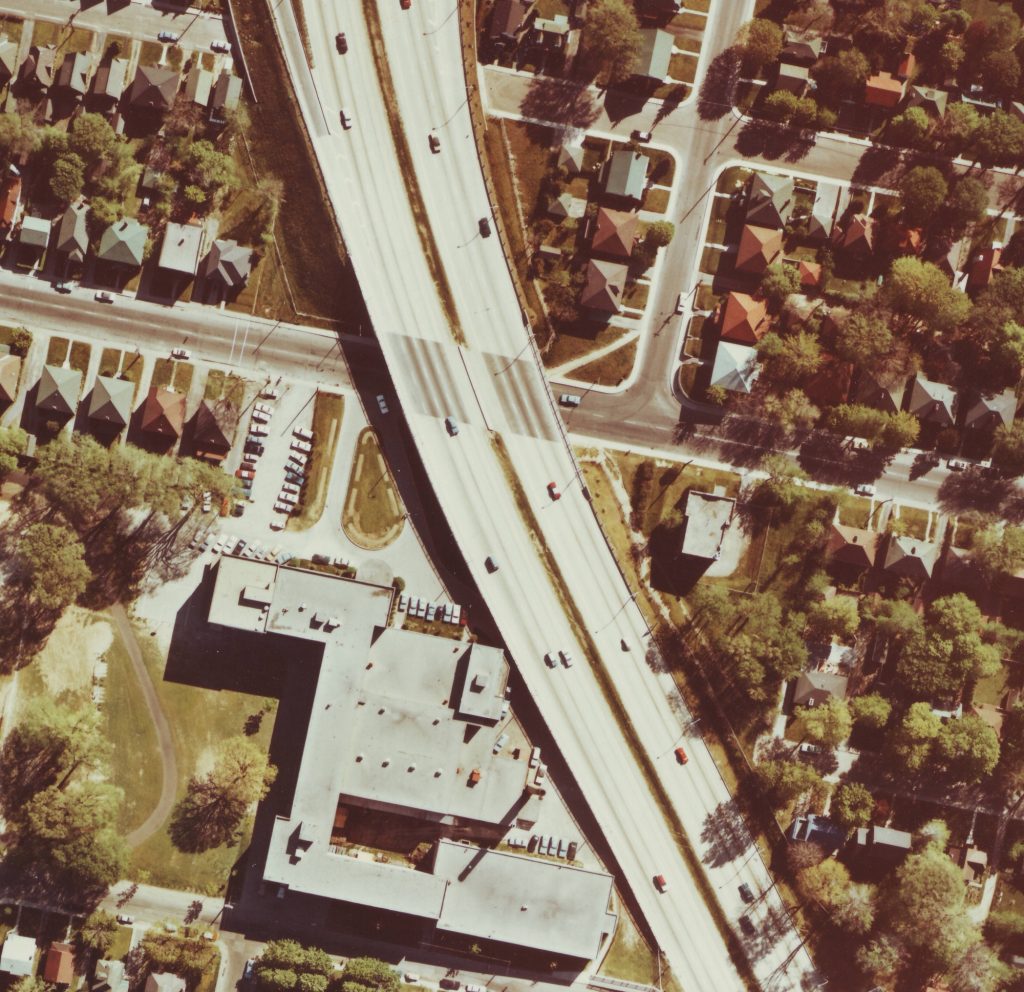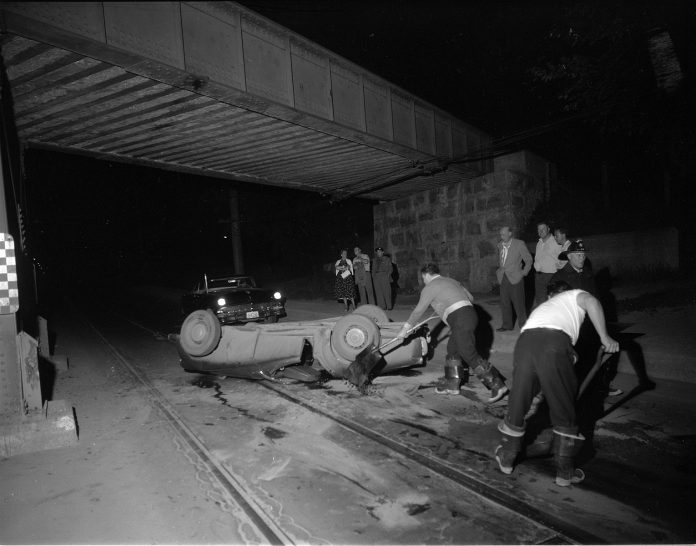The Holland Avenue Queensway overpass is such a familiar piece of road infrastructure in Kitchissippi that hardly anyone gives it much thought. But it’s becoming an increasingly important subject as it reaches the end of its lifecycle.
The overpass started as a railway bridge 130 years ago. The Ottawa, Arnprior and Parry Sound Railway (OA&PS) was built by lumber baron J.R. Booth, largely to facilitate shipping of his timber and wood products. Booth surveyed the farmlands stretching from Ottawa to the west and decided on an optimal route through the vast countryside.
On Nov. 30, 1892, Andrew Holland sold to Booth a 80’ wide, 719’ long strip of land through his Kitchissippi farm property, totaling about an acre and a third, for $528. This would set in motion a major piece of the neighbourhood’s development.
The OA&PS immediately built their line, which saw its first trains arrive less than a year later. By early 1895, the city was putting pressure on the Ottawa Electric Railway to run streetcars to the Experimental Farm. City Council’s Street Railway Committee was tasked with exploring potential extensions of the system.
Initially, the city had planned for the streetcar line to run south up Preston Street to get to the Farm, but the plans became contentious. Not only was the south end of Preston a large swamp, 25 of the 26 families living on Preston Street south of Somerset petitioned the Committee, saying they didn’t want the streetcar line in their neighbourhood.
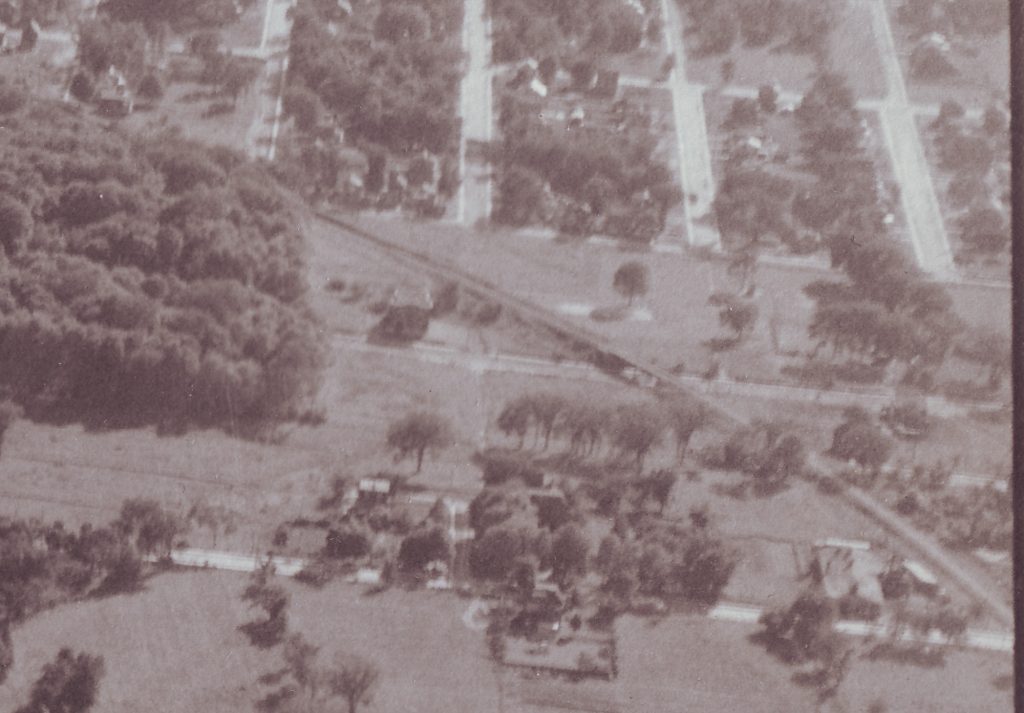
As the city had also committed to building a line to Hintonburg, it became clear that the extension down Wellington to Preston, then west on Somerset and back onto Wellington through Hintonburg would be an ideal route to extend all the way to the Farm.
Once the decision was made in April 1895, things moved quickly. By late May, the railway ties were delivered all along the route, and the rails were soon laid. Streetcars arrived at Somerset Square by September and were running as far as Parkdale by October 1.
Meanwhile, the entrepreneurial Andrew Holland filed a subdivision that same month, splitting the old Hinton farm between Parkdale and Harmer into builder lots. Down the centre of the plan he included a street specifically designed for streetcars. Extra-wide at 80 feet, it was to be the route of travel to the Experimental Farm. He named this street Holland Avenue.
There were challenges
Presenting the biggest challenge was the crossing of the OA&PS at the top of a fairly steep hill about halfway between Wellington and Carling. It was decided that a subway bridge needed to be constructed underneath the OA&PS tracks. This would both help ensure a more gradual grade as the cars travelled along Holland, and also to eliminate the risk of crossing trains and slower travel times that a level crossing would have created.
To create the subway, an embankment under the OA&PS line was cleared for one hundred feet, and at either side abutments were built for a bridge, on which the trains would cross. The stone used in the building of the subway was taken from a small quarry at Mechanicsville.
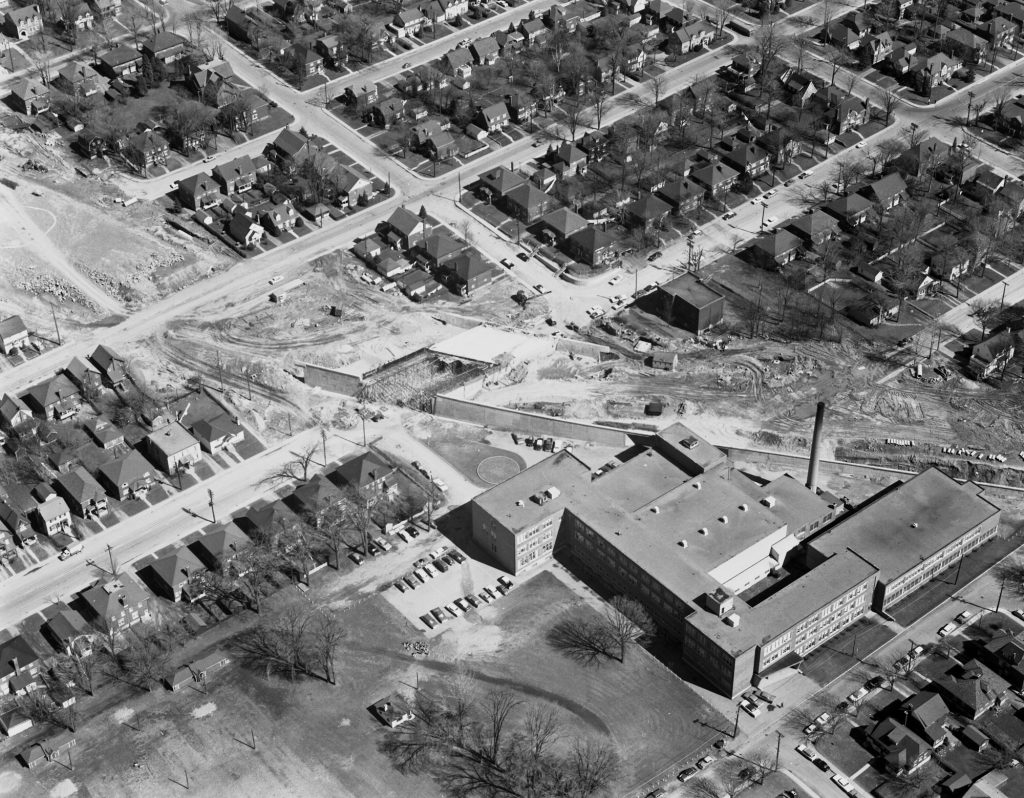
The trains of the OA&PS were running over the bridge by Dec. 14, 1895.
Though Holland Avenue was now officially open all the way to the Farm, streetcar service did not begin until spring. The tracks ran from Wellington to Carling, and featured two tracks with a single line of posts in the middle, with arms branching out over both tracks for the trolley wires. The posts were also constructed to hold electric lights and telephone and telegraph wires, which would soon come to the new residential section along Holland.
To coincide with the arrival of the streetcars, the Electric Railway opened the West End Park, just south of the OA&PS bridge — a 24-acre grove with entertainment and attractions, intended to draw Ottawa residents out to a relaxing resort away from city life.
Meanwhile, the Holland Avenue bridge continued to serve the railway. The OA&PS became part of the Canada Atlantic Railway in 1899, which was sold to the Grand Trunk Railway in 1905. When it went bankrupt in 1923, it was merged into the Canadian National Railways.
As road traffic became more prevalent, Holland Avenue became a major roadway in the west end. Streetcars and automobiles shared the road. Houses were constructed on three of the properties abutting the subway. It became a busy spot, far different from a few decades earlier when it was a track through the wilderness.
Lighting became an issue. The steel girders of the subway were occasionally problematic. Children and pedestrians would step out from behind them, causing sudden panic for a motorist. During slippery driving conditions, cars would occasionally slide into them.
The overpass also became a place of mischief for teens. One reported story, on Halloween night 1949, saw kids on top of the subway hurling bricks at passing cars. One struck a car heading south on Holland, denting the hood, and cracking the windshield. The driver stopped and ran after the culprits, who had fled west along the tracks.
Tragedy was also seen in this area. On New Year’s Day, 1937, 13-year old Jean Hyde of Merivale Road was walking on the overpass tracks with her brother when she was struck and killed by a passing train.
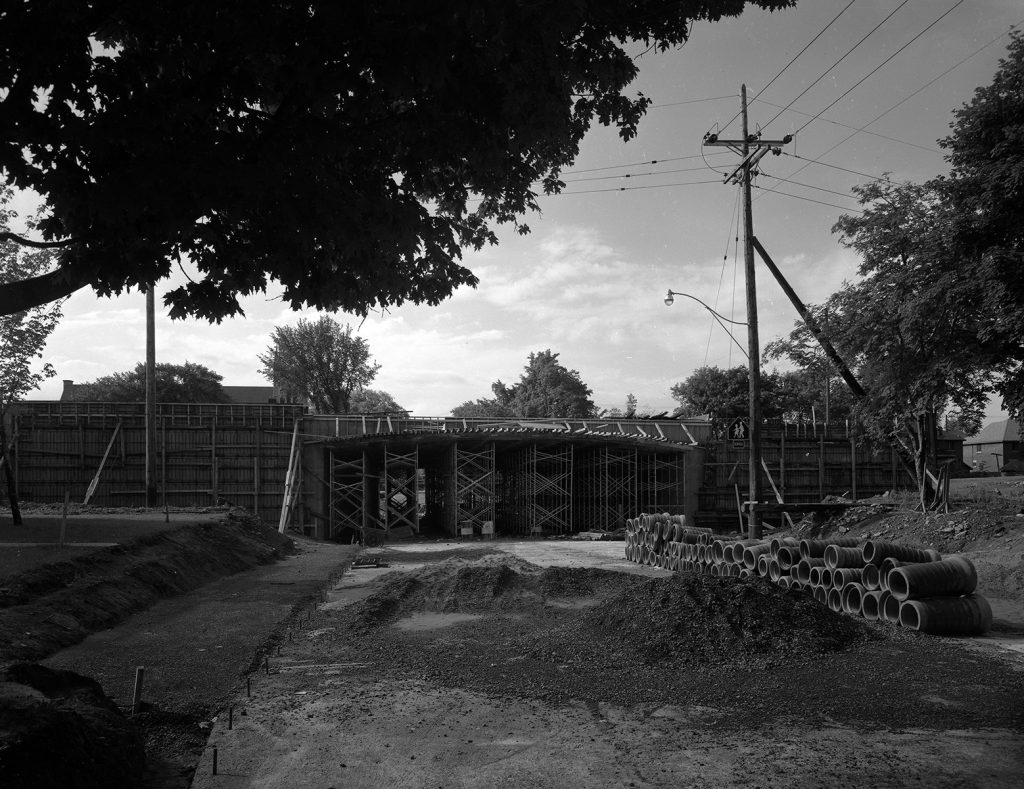
A new use for travel
The last of the CN trains passed over the bridge in 1952, and soon after it was announced that this old train line would become the route of the new Queensway.
The 80 foot wide path was insufficient; an extra 100 feet were required. So the government set about expropriating along the Queensway route, removing multiple houses on either side of the planned corridor. Thus, a handful of houses which once stood in this area were demolished or moved — five houses on the east side and a single house on the west side.
On April 22, 1956 the last streetcar went south down Holland Avenue through the subway, and the tracks south of Byron Avenue were soon pulled up. That same month, details of the Queensway plans were announced, which included the construction of 34 overpasses and underpasses, at a total cost of $8.3 million. Included on the list was the overpass at Holland Avenue at a cost of $203,000.
Parkdale was always planned as an access point for ramps on and off the Queensway. Holland could never have handled the ramps, largely owing to the location of Fisher Park High School, built in 1949.
The Holland Avenue bridge was completed in June 1961. The Island Park Drive bridge was finished later that fall, and Parkdale and Bayswater months after that.
The Queensway opened to vehicles for the first time between Carling-Kirkwood running east to O’Connor Street, on May 18, 1964.
A little over 50 years later, in 2016, the MTO completed a study of 23 Queensway bridges at 12 locations between Holland Avenue and O’Connor Street. Initially the bridges at Holland, Parkdale, Fairmont and Bayswater were recommended for rapid rehabilitation. However, in the ensuing years, deteriorating bridge conditions and concerns over the rapid rehabilitation approach on these bridges led the MTO to suggest in 2023 in an Addendum, that the bridges would instead need to be replaced.
